Last week I was lucky enough to present a workshop at the wonderful La Salle National Maths Conference entitled “Five things we do with our GCSE Maths classes”. It went down quite well, and a few people who could not make it have asked if I could do a write up, so here it is! 🙂
All of the five techniques involve my Diagnostic Questions website, and all are completely free. They take advantage of the recent improvements we have made to the site, particularly in the area of students learning from each other’s explanations (my favourite bit!). Students can do all of these on phones, tablets or computers, meaning they can be learning wherever they are.
I am of course ridiculously biased, but I believe that using the site in the ways I talk about below has been the major contributor to the noticeable increases I have seen in both my students’ confidence and their exam marks. They can learn from students all around the world, accessing ways of understanding topics that they would not be able to get from anywhere else.
Either read the whole post (warning: it’s a long one!), or click on a particular section that catches your eye.
And if you want the slides from the presentation, maybe to use for a CPD session in your school, then just click here
Five things we do with our GCSE Maths classes
1. Weekly Quizzes
2. GCSE Diagnostic Papers
3. Daily Revision Stream
4. Building Individual Student Profiles
5. Identifying Common Misconceptions
1. Weekly Quizzes (back to top)
Each week, across Years 7 to 11, our maths department creates a series of 10 question diagnostic quizzes for our students. The first 3 of these questions cover the current topic being taught, and the next 7 cover a mixture of topics from the current or previous academic years. The idea is that content remains fresh in their minds.
With Year 11, now that we have covered all of the GCSE content, the 10 questions comprise of a full range of topics, usually 3 number, 3 algebra, 3 data and 3 shape. We also produce 3 versions of these quizzes: an A/A* Higher tier, but still containing some of the easier topics that the students regularly lose daft marks on; a C/B Higher tier, focussing on the key topics and skills that are tested on most papers; and a Foundation quiz.
6 of my A/A* Higher Tier quizzes can be found following the links below, where you can easily assign them to your classes:
Mr Barton’s Year 11 Quiz 1
Mr Barton’s Year 11 Quiz 2
Mr Barton’s Year 11 Quiz 3
Mr Barton’s Year 11 Quiz 4
Mr Barton’s Year 11 Quiz 5
Mr Barton’s Year 11 Quiz 6
It takes seconds to put together a quiz yourself. And with over 5,000 top quality maths questions on the website to choose from, you will have plenty of options to build just the right set of quizzes for your classes. To see how easy it is to build quizzes, just visit our How To… page.
And if you fancy having a go at one yourself, then here you go:
When my students have completed the quiz, I get their data back immediately, allowing my to quickly identify questions they struggled on:
But more than that, by viewing the explanations they have given, I am able to understand exactly where they mistakes or misconceptions lie:
I am also able to print out a pdf summary report for each student (the students can also do this themselves) which shows their answer and explanation, the correct answer, and the most popular correct explanation chosen by students from around the world. This can be stuck in their book or kept in their own revision file:
Of course, having identified the key misconceptions, I am then able to intervene back in the classroom, possibly by pairing up students with those who have given beautifully correct explanations. But here is my favourite part… rarely do I need to do this, because when students are reviewing their answers, they get to view explanations from students from all around the world until they find one that makes sense to them 🙂 This is what my Year 11s love doing the best as they are no longer reliant on one or two ways of explaining how to do something. Instantly they have access to thousand of people explaining things in ways they really understand.
Take this ratio question, for example:
A student goes for the answer of B and explains their reasoning as follows:
When reviewing their answer, they can immediately see two explanations for the correct answer. Hopefully one of these will make sense to the students and they can Like it. If not, they can generate another two explanations until they find one that makes sense to them:
And if they want to gain extra insight into where they went wrong, they can click on the answer they gave and see explanations given by other students who chose this answer. They can click “I thought that”, which gives us a teachers extra insight into common misconceptions, and also gives the students confidence that they are not alone in their thinking:
The beauty of doing these quizzes across groups is that we can compare student performance across classes, which allows teachers to work together in a positive, meaningful way.
And I can also search for any interesting trends, such as between gender:
2. GCSE Diagnostic Papers (back to top)
I have converted the Edexcel June 2014 GCSE Higher Maths exam into two longer form Diagnostic Question quizzes. Each one is around 90 questions long and uses different questions and numbers to the paper versions, but crucially tests the same skills.
I have broken the more complex multi-mark questions down into several steps, thus allowing you to identify exactly where in the question students are going wrong.
For example, take the following question from the original paper:
And here is my version of it:
Just like with the Quizzes above, I can do full data analysis, allowing me to identify problem questions for my students.
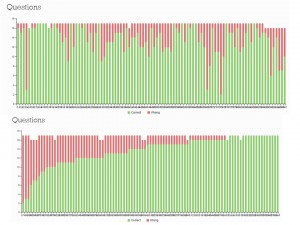
For example, the following were the two most incorrectly answered questions amongst my Year 11 class:
Let’s take a look at those two questions more closely, and the reasons my students gave:
Valuable insight that allows me to better focus my future teaching.
To access these papers to assign to your students, click on the links below:
Edexcel – June 2014 – GCSE Maths Higher – Paper 1 (non calculator)
Edexcel – June 2014 – GCSE Maths Higher – Paper 2 (calculator)
These quizzes do not all have to be completed in one sitting – students can return to where they left off any time they like.
And if you fancy having a go yourself, here is Paper 1:
3. Daily Revision Stream (back to top)
I have long told my students that the key to being good at maths is continual practise for short periods of time, as opposed to the all to common technique of cramming it all in at the last minute.
With that in mind, each day on Twitter, at 8am and 8pm, I am tweeting out one Higher and one Foundation GCSE Maths question. Students can answer this on any device they may have, and like any question on the website, they can benefit by reading explanations given by students from all over the world.
To follow the @mrbartonmaths Twitter feed, just click here
We print out each question and display it on our maths notice board:
But far more exciting than that, is our brand new GCSE Maths Revision Stream! 🙂
Every single day until the exam, our students have two lovely GCSE Maths questions (either Higher or Foundation) waiting for them when they log into the site. They can answer these any time between 6am and 11pm (some of my students answer them over breakfast, some on the bus home, some before they pass out at night). These questions have been chosen to cover the full range of topics that will appear on their GCSE exam, and contain a countdown to the big day itself.
Of course, having answered the questions, students benefit from being able to read correct explanations to resolve their own misconceptions. But more than that, as their class teacher you get a personalised daily report for each question illustrating:
1) A clear summary of your class’ performance
2) A meaningful illustration of your class’ performance relative to the rest of your school and the rest of the country
3) The 3 most popular correct explanations from the correct answer, which may offer a new way of explaining a concept to your students
4) The most popular explanations given for the wrong answers, allowing you to identify and understand key misconceptions your students may have
5) The answers and explanations each of your students gave
Below are some screen shots of what this report looks like:
I hope this will prove an invaluable document in learning about your students’ understanding of mathematics. It can show you at a glance who has real depth of understanding in a given concept, allowing you to pair students up, or direct your teaching accordingly. It can tell you what topics your class as a whole struggle with, and direct you to teachers in your school who may be able to help. And I am also convinced that the continual daily practise, coupled with the access to unlimited explanations, will be of enormous benefit to your students.
And if you want to download an example pdf, just click here
You can try out a 7 day Higher or Foundation Stream for free with as many students as you like. Just click here for more details.
And until Friday 27th March, you can purchase the full Stream – that is currently 74 days worth of top-quality carefully chosen GCSE Maths questions taking you right up until the GCSE Maths exam – for the bargain price of 50p per student (usual price is £1). That is less than 1p per day. Again, just click here to find out more.
4. Building Individual Student Profiles (back to top)
We also have a very useful (if I do say so myself!) feature on the site which allows you to build up a really detailed picture of an individual student’s understanding of mathematics. This can all be accessed via the Data > Students page (you must be logged in to access this).
Take one of my Year 11s, for example. With a few clicks I can pin-point that one area of weakness is indices. More importantly, she can also do this, which allows her to focus her revision (and me to focus my intervention) accordingly.
Once the area of weakness has been identified, the student can see all the questions they have attempted on this topic, together with the answers and explanations they have previously given:
Once a week my students must do this, and show me that they have identified and answered one question that they previously got wrong. Many students answer a lot more than this as they find this feature very useful. I have found in the past that students are keen to revise and work on their maths, but often do not know where to start. Hopefully this will help significantly in this regard.
5. Identifying Common Misconceptions (back to top)
Finally, we use the website to identify common areas of weakness / misconceptions before we deliver a topic. This is proving particularly useful to teachers who have never taught GCSE Maths before, or who want to gain an invaluable insight into students understanding to better inform their teaching.
For example, imagine you were about to teach a lesson on multiplying fractions, and you wanted to know where students are likely to go wrong. Well, you can get all the information you need via the Data Questions page, which will filter out the most incorrectly answered questions on any area of maths, and allow you to view the explanations students gave for those answers:
This should hopefully give you an invaluable insight to help with your planning and delivery of the lesson.
I hope this post proves useful in giving you an insight into how we as a maths department use the Diagnostic Questions website with our GCSE students. As I say, I am completely 100% biased, but I genuinely believe that we have never known more about our students’ levels of understanding. And more importantly for me, my students have a way of accessing explanations that make sense to them in a way that they couldn’t previously.
Any questions, either comment below or drop me an email.
And if you made it to the end of this epic post, thank you for your time, and now you have certainly earned a nice cup of tea.
Craig
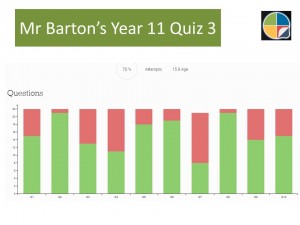
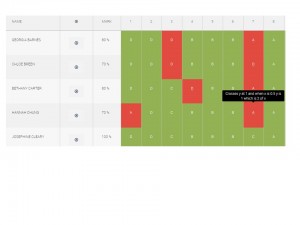
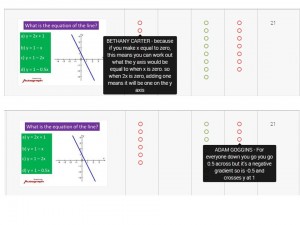
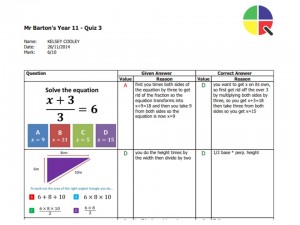
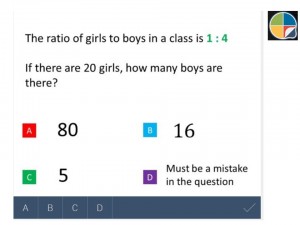
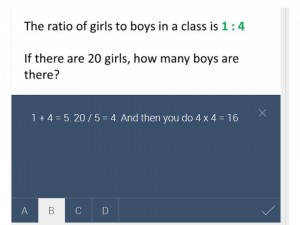
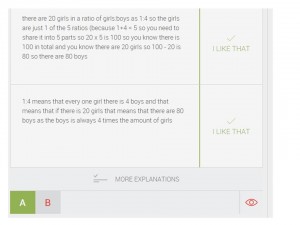

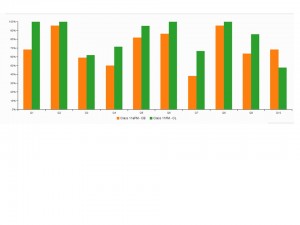
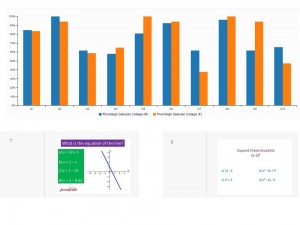
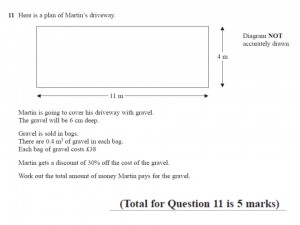
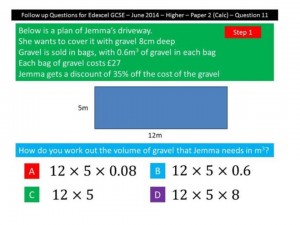
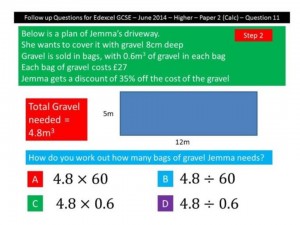
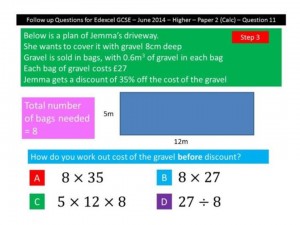
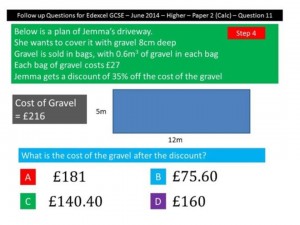
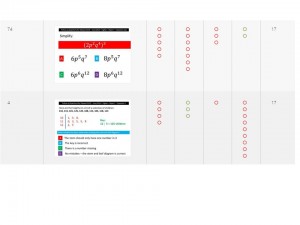
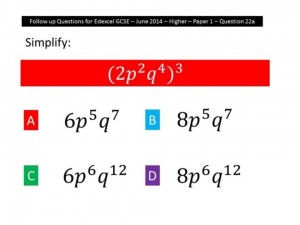
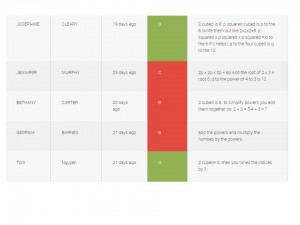
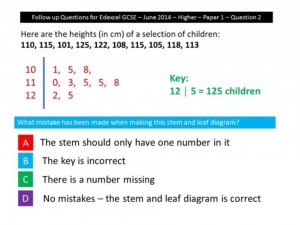
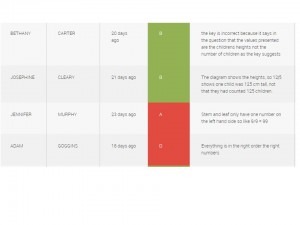
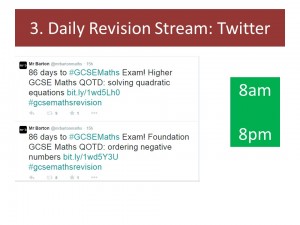
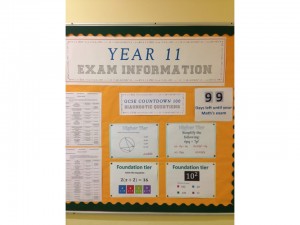
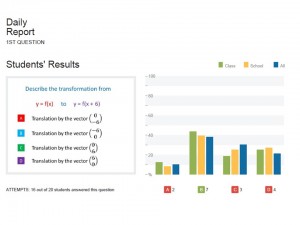
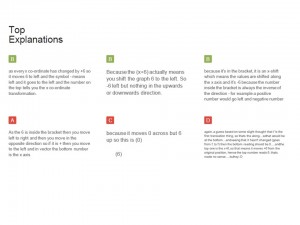
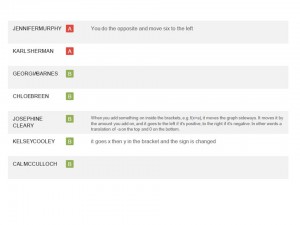
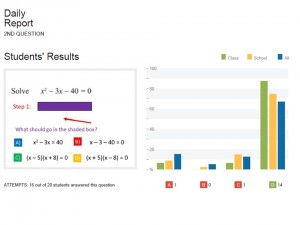
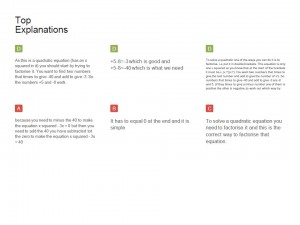

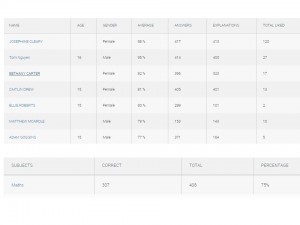
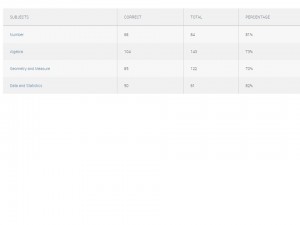
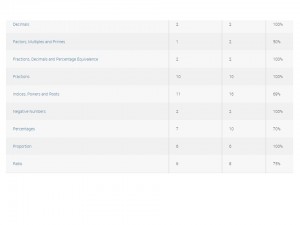
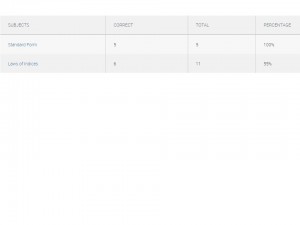
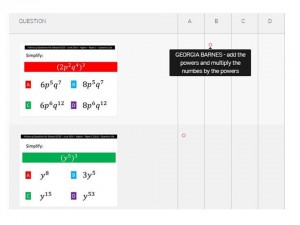
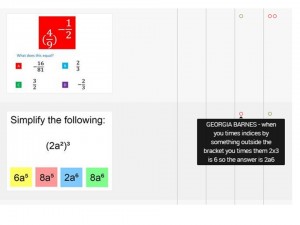
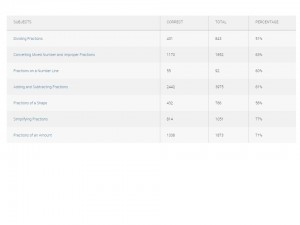
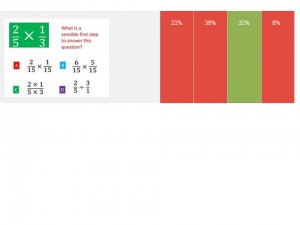
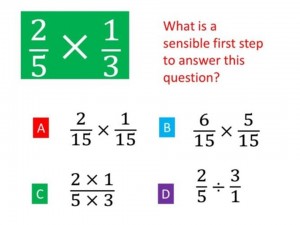
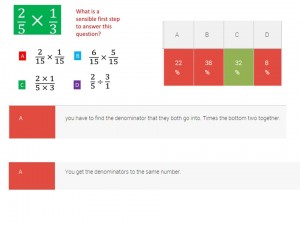
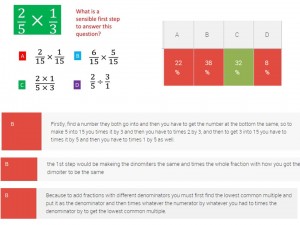
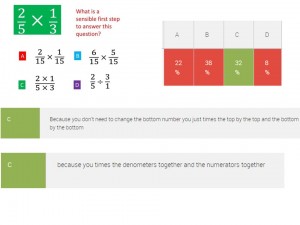
Thanks for all your efforts – this is going to be really useful.
Thank you 🙂 Let us know how you and your students get on. Craig
My god you’re just incredible aren’t you?! Seeing stuff like this really makes me think twice about having left teaching because I just feel so inspired by your posts! Keep it up Mr B.
You are too kind 🙂
I would like to trial revision streams for the next three weeks in a view to implementing it from September. Would this be possible please?
Hi Becky,
The revision streams were designed for the build up to GCSE, so have now finished. We are currently working on some new ones, so keep an eye out on the site or my blog to find out more.
Thanks for your message
Craig